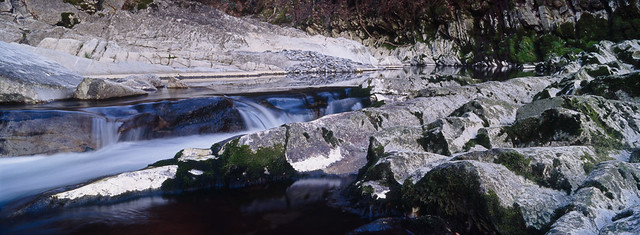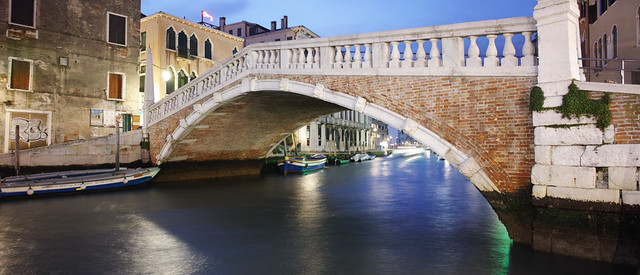The Digital XPan, by Sigma
Well, close enough
I bought my first Hasselblad XPan in 2000, and in the following 15+ years, I’ve accumulated a large shelf full of binders of negatives and (mainly) slides. I bought it because I liked the widescreen format, and I still do. Although a niche camera, the XPan was pretty popular, initially principally with landscape photographers, many of whom used one alongside an SLR. For me, it was the other way around - the SLR was the “second camera”. The XPan started to fade from view with the advent of DSLRs, and Hasselblad/Fuji stopped producing it in 2006, citing some story about a circuit board not being compliant with some convenient European regulations on lead content.
In recent years it has seen something of a revival, and secondhand prices for good copies have risen higher than the original retail. It seems to be riding a lot on the “back to film” movement, and the accompanying mystique. But there do not seem to be many people around who, like me, bought one back near the release date and never stopped using it. And even fewer people who shoot slide film (still). It seems to be quite popular nowadays for “street” photography, where the unusual frame gives a novelty effect that compensates for many a shortcoming in the photograph. However, with the lenses having a maximum aperture of f/4, and rangefinder focusing, I’m not personally convinced it is that ideal for street. But I’m no authority on the matter.
For me the biggest frustration with the XPan has nothing directly to do with the camera, but with the rapidly shrinking availability of slide film. My favourites, Kodak E100G and Fuji Velvia 100F (nothing like the infamous Velvia 50 by the way) have long since departed, Fuji Provia 400X is more or less gone, and the only serious choice left is Fuji Provia 100F, which I never much liked. The revival of Ferrania Film is, so far, inconclusive - initial batches of new film are close to a year overdue. Of course the choices in negative film are a little wider. I like Kodak Porta 400, but it only really suits brightly lit urban scenes. Kodak Ektar 100 is ghastly. And I’m a colour photographer by instinct, not black & white. On top of all of this, the bottom has fallen out of both semi-pro E6 processing, and of the semi-pro film scanner market. So not only is the writing on the wall, but it’s on every wall in every direction.
So, there’s been a lot of calls, directed mainly at Fuji and Hasselblad, to produce a “Digital XPan”. There’s a snag there, though, because a digital sensor covering the full 65x24 XPan format - two “full frame” sensors side by side - would be horrendously expensive, even though this seems to be what people want. So the question arises, what do we actually mean by “Digital XPan” ? What are the key features ? Would everybody agree? The answer to the last question is obviously a resounding “no”.
The key features of the XPan, technical and otherwise, are:
- Native “panoramic” double-frame format
- On-the-fly selectable standard 35mm frame format
- Rangefinder manual focussing
- TTL electronic metering
- Offbeat, unusual camera
- Built like a tank
- Interchangeable lenses
- Very high quality - and expensive - glass
- Oh yeah… film
Personally, the key feature is the first: a camera which records what-you-see-is-what-you-get panoramic format with a dedicated panoramic viewfinder. In-camera composition is very important to my way of doing and enjoying photography, and for me cropping in Photoshop as some kind of afterthought rarely produces a strong, satisfying image. I emphasise, for me: clearly other people have different opinions. As for film, I’ll fall back again on a quote from one of my heroes of panoramic photography, Stuart Klipper, who when asked why he (still) uses film, replied “because that’s what the Linhof takes”.
So, yes, you can certainly obtain a panoramic frame from any digital camera through post-processing. Many compact cameras also have a 16:9 framing option which you can squint at while holding the camera at arms length in front of your face. But this is simply not the “XPan experience” for me. It doesn’t inspire me, and it doesn’t give me the thrill that seeing the world through the XPan rangefinder does.
And that’s a good time to introduce you to the other camera on the stage here, the Sigma DP0.

Sigma DP0 with viewfinder, and Hasselblad XPan
I’ve been using Sigma cameras with their unique Foveon sensor since the 50mm-equivalent DP2 Merrill. As I, and many others have written, when these cameras get their ducks in a row, they are truly fabulous. The rest of the time they’re a disaster area. A while back, Sigma introduced a new lineup, using the revised Quattro sensor. They also introduced what would be politely described as an unusual body design. A lot of people were aghast at this. I thought it was fantastic. But I didn’t buy one at the time, as the DP2M & DP3M I already owned were quite enough. But then came the announcement of the DP0 ultra wide (21mm equivalent), and buried deep down in the specification, the 21:9 framing option. It seemed that somebody in Japan was thinking along the same lines as me.

The DP0 21:9 aspect ratio
So eventually, after a lot of indecision, I got one, along with the hood viewfinder attachment which allows eye-level composition, which as I have said is a must-have for me, and has the additional benefit of making an already strange looking device look downright weird. It’s certainly a conversation starter.
The 21:9 aspect ratio is a bit deeper than the XPan. It is about halfway between the standard 6x12 and 6x17 ratios - the XPan is slightly taller than 6x17. This is actually fine by me. I often found the XPan format a smidgen too wide, and I’ve always pined for a 612 camera. The resolution of the 21:9 DP0 image (5424 x 2324) is approximately half that of an XPan frame scanned at 4000dpi (around 12200 x 4700), but of course the two are not directly comparable. The actual information content is very similar. Of course, the DP0 has a fixed lens, whereas the XPan has three native lenses to choose from (as well as some other fairly dodgy choices via adaptor). The DP0’s 21mm equivalent lens gives a field of view roughly equivalent to the XPan 45mm lens. And they’re both f/4. And both extremely good quality lenses.
Anyway, that’s an awful lot of babble before getting on to the core of the matter: how do they actually compare ? Well, I don’t do “tests” as such, I really cannot be bothered. But recently I took the DP0 to make a few photos in the nearby Golle della Breggia, in a location I remembered shooting with the XPan a few years back.
XPan, 45mm lens, Kodak E100G, scanned on Minolta Dimage Scan Multi Pro
Sigma DP0, processed in Sigma Photo Pro v6.3.2
Of course, these photos are taken at different times of the year, different times of the day, and with different framing, never mind with completely different technology. The only common factor was the photographer. Given that, to my eyes at least they have a quite remarkably similar rendering of colour and tonality. The Minolta scanner, which I have now replaced, also developed a tendency to exaggerate red in the midtowns, which I clearly did not sufficiently correct here. I could certainly get the two photos to look very close in rendition with a few minutes work, but that isn’t the point: what I’m looking to decide is if the DP0 can assume the role of the XPan for me, and I’m tending to believe it can, so far.
It is also interesting to compare resolution. Here again, there is a degree of subjectivity, as the scan is not necessarily optimum, and here no sharpening has been applied (although Sigma Photo Pro allegedly always applies some sharpening). I’ve tried to match two roughly similar areas of the photos, with the DP0 crop at 1:1, and the XPan reduced more or less to match.

Sigma DP0

XPan
So, very, very subjective, but it does look like the Sigma’s Quattro sensor is a match for 4000dpi scanned 35mm Kodak E100G. Not actually a big surprise, although it is probable that with a bit of work I could extract a little more detail from the film.
The XPan still has at least two advantages - the 30mm and 90mm lenses. But in terms of overall end to end user experience, there is a remarkable similarity between the two cameras. Indeed, it can be as time consuming to extract a processed file from Sigma Photo Pro as it is to make a good film scan…
One are where the DP0 wins outright, however, is low light photography. You can do long exposures on film, but dealing with reciprocity failure is painful, especially with slide film. The DP0, on the other hand, will cheerfully make an exposure up to 30 seconds (but no more, let’s not carried away here). Also, I really like the way the Foveon sensors (both Merrill and Quattro) render tungsten lighting. So to wrap up here are a few shots from my first major outing with the DP0 in Venice.
It is tempting to draw a conclusion from the fact that since I’ve owned the DP0, the XPan has sat on the shelf. But it is early days yet, and there haven’t really been many opportunities to use it recently. I certainly wasn’t going to take it to Colombia. There are also some situations in which I don’t really trust the Sigmas, in particular snow and ice. And although the Quattro has much better battery life than the Merrill, it’s still pushing it to reach 100 shots. Then again, processing 100 shots in Sigma Photo Pro takes roughly a decade, so perhaps it’s just as well.
But I’ll repeat what I’ve said before: the Sigma DP0, with the LCD viewfinder, set at 21:9, is the closest digital camera I’ve found so far in terms of handling and user experience to the Hasselblad XPan. And it’s a great camera in its own right, fun to use and with devastatingly high quality output.







2 comments
Steve January 02, 2018 - 12:132 comments
David Mantripp January 04, 2018 - 5:48